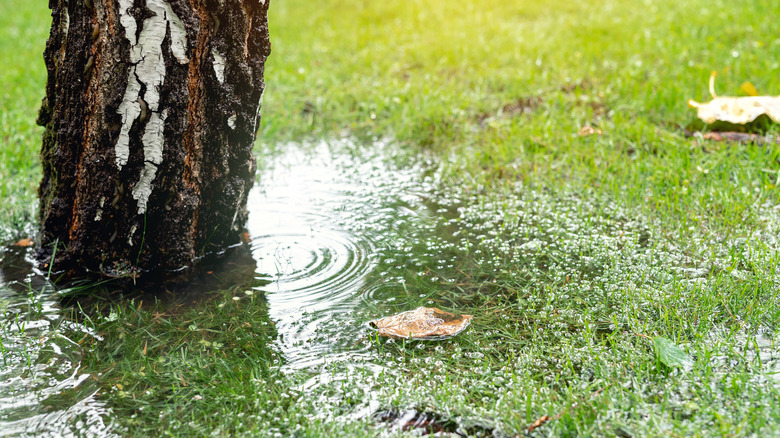Exterior improvement projects like leveling and grading are usually executed before building a new house. But these procedures sometimes need to be implemented after a home has been purchased to increase safety and boost curb appeal. The cost to level and regrade your yard ranges from a couple hundred to tens of thousands of dollars, depending on its size and the severity of its slope on your property. To put this into perspective, regrading an acre of land can cost homeowners between $15,000 and $45,000.
This raises the question: What’s the difference between leveling and regrading, and how are the two landscaping techniques related? Leveling refers to the flattening or evening out of a bumpy lawn by redistributing existing soil. Regrading, on the other hand, is a type of leveling and refers to the measures taken to improve the flow of rainwater as it falls upon your property. However, some lawn care professionals use the two terms interchangeably.
Some homeowners may not think leveling and regrading are necessary, but they serve as valuable solutions to a messy (and expensive) landscaping nightmare. Drainage issues around your home may persist if you avoid the procedures long enough, which can cause damage to your home’s foundation if left unaddressed indefinitely. Identifying the warning signs of a dangerously sloped yard early on is key to saving yourself from even more costly problems around your home in the future. And when in doubt, contact a skilled contractor in your area for a professional opinion.
Leveling and regrading costs explained

As with most landscaping projects, the cost to implement yard leveling or regrading will differ depending on the size of your yard. Many contractors consider square footage when determining prices for clients, with some charging as much as $2 per square foot to complete a job. But this price point is usually reserved for the most time-consuming and physically demanding projects. The majority of yard leveling and grading procedures cost between $0.50 and $1.50 per square foot. Landscapers may also opt to charge by the acre instead. Although most American backyards rarely extend past half an acre, these projects can easily cost over $20,000.
The size and purpose of the project will also influence pricing. In other words, regrading a small portion of your yard in preparation for installing a pool or patio will normally cost a homeowner up to $1,000. Regrading to add a driveway might cost a bit more, with average prices ranging from $750 to $2,500. However, instances where an entire yard needs adjusting are typically a bit more expensive. Expect costs for such procedures to approach or even surpass $5,000. Leveling an entire yard can be priced similarly, since certain landscaping projects, like removing a hill or fixing an exaggerated slope, are more labor-intensive than those only requiring surface-level repairs. The depth of the project, the consistency of the underlying soil, and the condition of the topography on the land are also contributing factors in determining prices.
How to know when your yard needs regrading

If you’re wondering whether it’s time to consult a specialist about the condition of your yard, try personally inspecting your property first for signs of deterioration. There are many signals to look for that may indicate a serious threat to your home looms ahead. It’s important to note that your yard’s grading may not pose a problem when you first move into your house, but can slowly turn into one over time, especially if you live on a steep hillside or close to a body of water.
One of the most notable reasons to level and regrade your yard in the first place is to improve the flow of irrigation around your home. So, when inspecting your lawn for warning signs, look for obvious examples of inefficient drainage or blockage after substantial rainfall, like standing water and slopes that direct water toward your home rather than away from it. It’s also reasonable to check your house’s gutters to make sure they’re preventing rainwater from accumulating and pooling around the exterior of your home.
A poorly-graded lawn can also interfere with your foundation’s sturdiness, so check your foundation for cracking and other forms of damage as well. Foundation repair becomes quite costly as deterioration worsens, with the most expensive projects often being priced in the tens of thousands of dollars. So don’t wait until the last possible minute to perform routine maintenance on such a critical part of your home.




